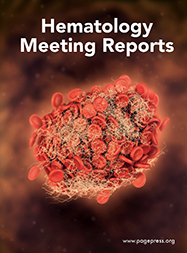Abstracts
3 June 2009
Vol. 1 No. 8 (2005)
0
0
0
0
 Smart Citations
Smart Citations0
0
0
0
Citing PublicationsSupportingMentioningContrasting
See how this article has been cited at scite.ai
scite shows how a scientific paper has been cited by providing the context of the citation, a classification describing whether it supports, mentions, or contrasts the cited claim, and a label indicating in which section the citation was made.
Gemcitabine: from solid tumor to hematology?
Supporting Agencies
How to Cite
Gemcitabine: from solid tumor to hematology?. (2009). Hematology Meeting Reports, 1(8). https://doi.org/10.4081/hmr.v1i8.299







